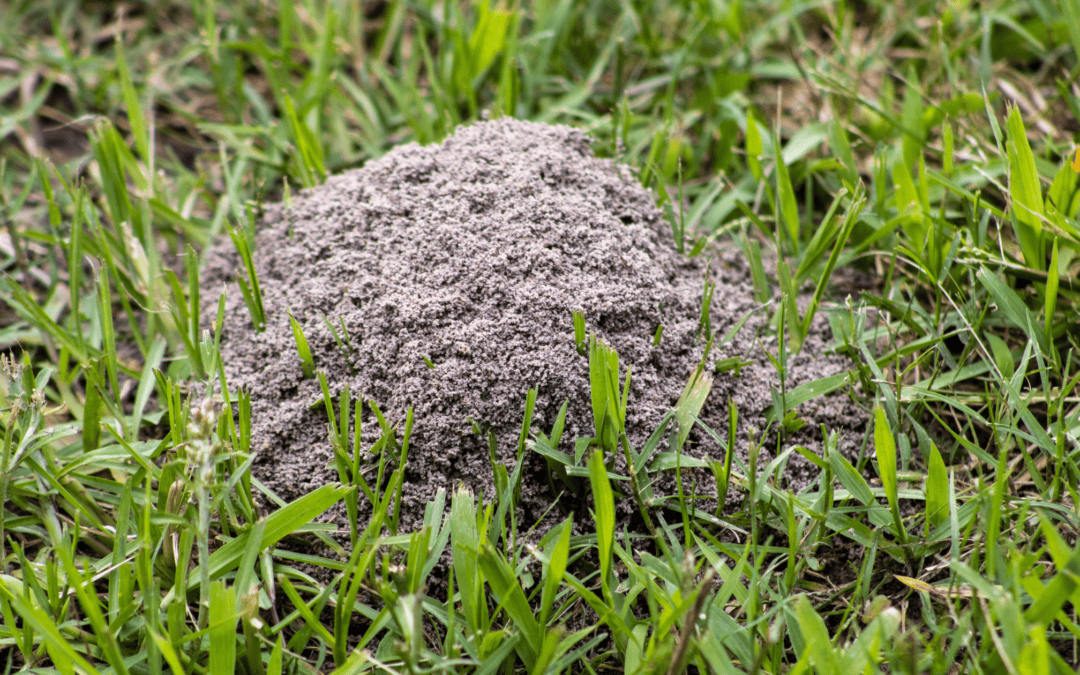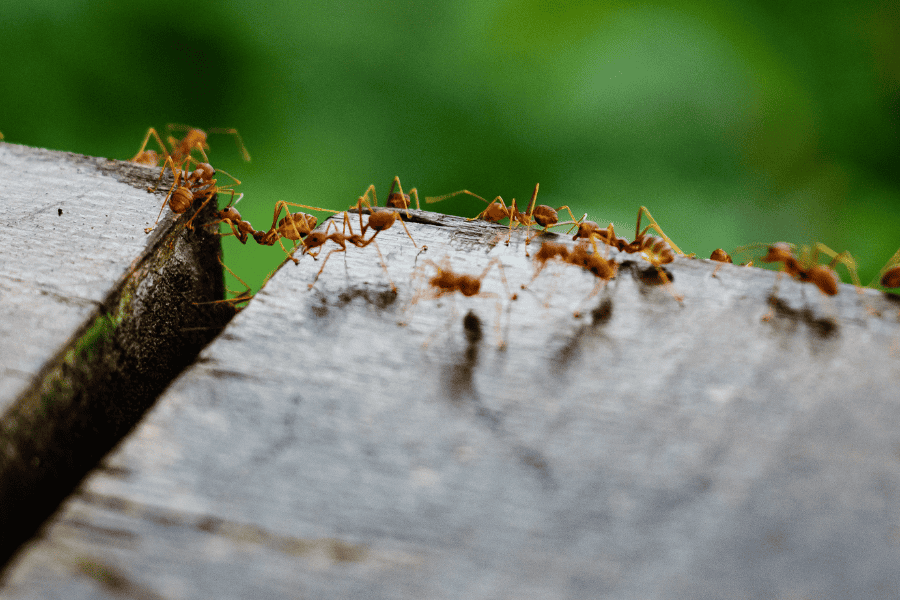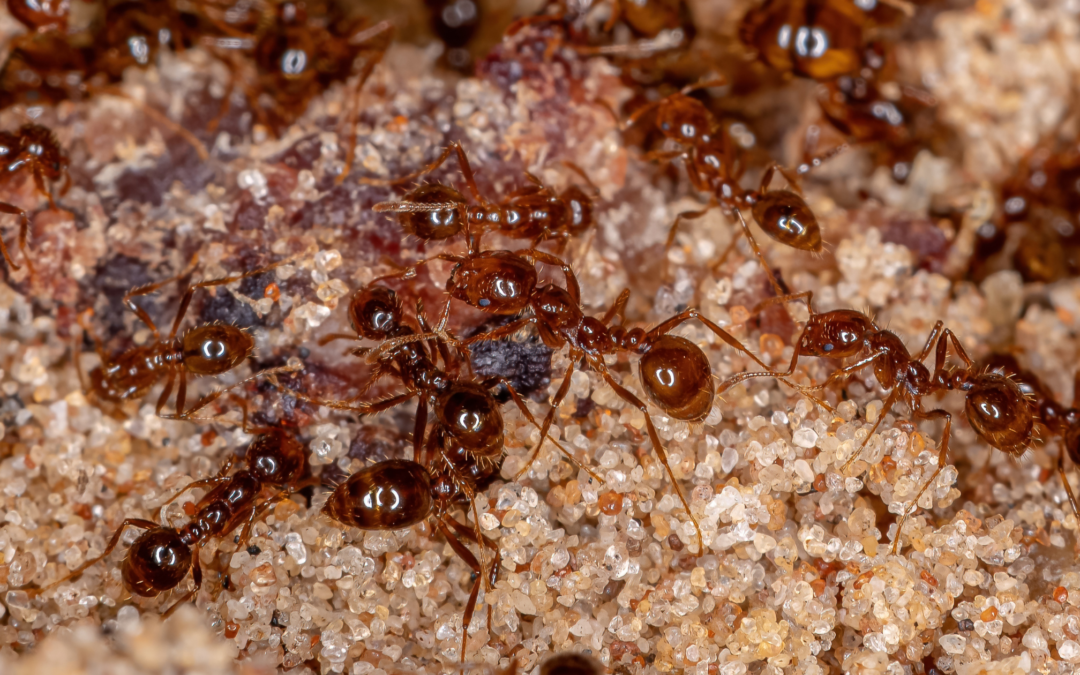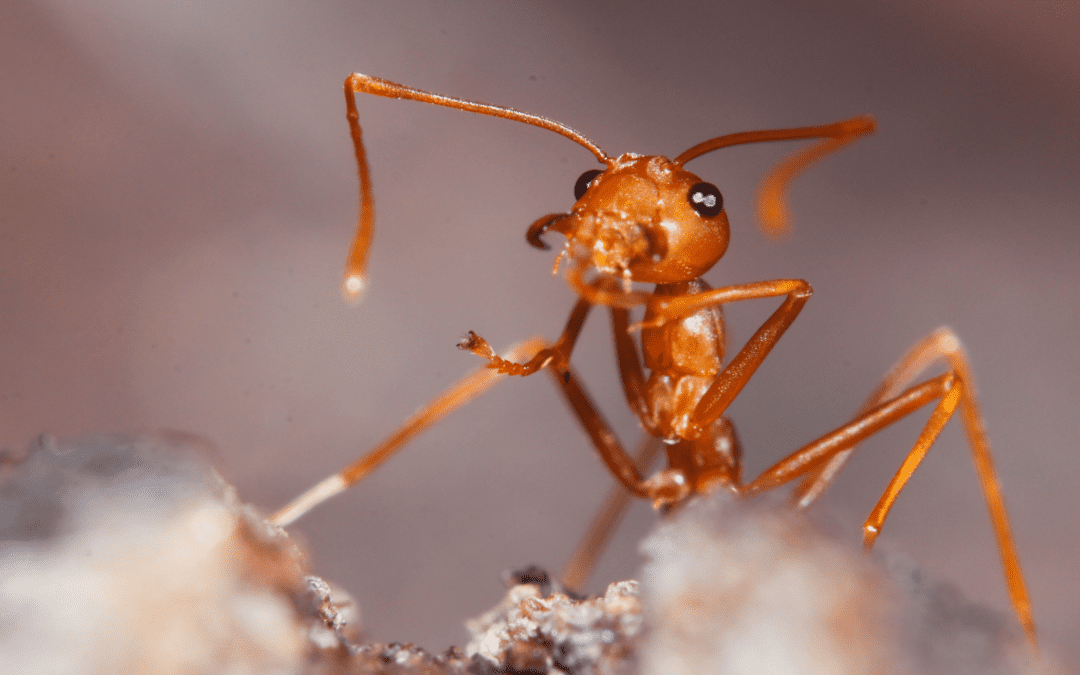READY TO GET STARTED?
REQUEST A FREE ESTIMATE
Fill out the form below or call (888) 466-7849 for a free, no-obligation estimate.

Living in Florida offers plenty of sunshine and beaches, but it also means dealing with fire ants. These pests thrive in our humid, warm environment, quickly taking over yards by creating mounds and delivering painful stings. Reducing and preventing fire ant activity is easier than you think. Let’s breakdown everything you need to know about fire ants.
Fire ants are known for their painful stings and aggressive behavior if they feel threatened, often stinging multiple times. If stung, these pests will inject venom that causes a burning and itching sensation, and in some cases will cause allergic reactions.
Fire ants can vary in size, ranging from 1/8 to ¼ inch and have reddish-brownish bodies. You’ll often see fire ants building their large, dome-shaped mounds in areas that are open and sunny, such as lawns, pastures, and along roads. These mounds can reach up to 18 inches in height!
Deterring fire ants away from your property is the first step to avoiding an infestation. Consider these DIY fire ant prevention tips:
If you’ve spotted one too many fire ant mounds on your property, call a pest control company near you. These experts will provide you with an inspection, fire ant control plan, and prevention tips to avoid an ant infestation in the future.

If you live in Georgia, you’re likely familiar with the nuisance of fire ants. These tiny terrors can turn a peaceful yard into a hazardous area, causing pain and discomfort with their bites. Understanding how to identify, control, and prevent fire ants is crucial for maintaining a safe and enjoyable outdoor space. This blog will guide you through the process of detecting fire ants, understanding why they’re harmful, and taking effective measures to control them.
Fire ants, particularly the red imported fire ants, are notorious for their painful bites and aggressive behavior. When disturbed, these ants sting multiple times, injecting venom that causes burning pain, itching, and sometimes severe allergic reactions. For individuals with allergies, their bites can be life-threatening and require immediate medical attention.
Beyond their painful stings, these ants pose significant threats to pets, livestock, and wildlife. They can damage crops and invade electrical equipment, causing costly repairs. Thus, managing fire ant infestations is essential not only for personal comfort but also for protecting your property and health.
Fire ants typically nest in sunny, open areas. They prefer well-drained soils and are commonly found in lawns, parks, fields, and pastures. Their nests, or mounds, are usually dome-shaped and can reach up to 18 inches in height. These mounds have no central opening like other ant hills; instead, the ants enter and exit through underground tunnels. In the southeastern United States, including Georgia, these ant mounds are particularly common due to the region’s warm climate.
Identifying a fire ant infestation early can prevent a small problem from becoming a large one. Here are some telltale signs that you might have them in your yard:
If you’ve confirmed the presence of this type of ants, taking immediate action is crucial. Here are effective methods to get rid of fire ants:
Preventing these aggressive ants from invading your yard is always better than dealing with an existing infestation. Here are some tips to keep them at bay:
Fire ants are a significant pest in Georgia, but with vigilance and proactive measures, you can keep your yard safe. Recognize the signs of fire ants, understand why they’re harmful, and use effective methods to control and prevent infestations. For persistent issues, don’t hesitate to contact a professional pest control company for expert assistance. By staying informed and prepared, you can enjoy a fire ant-free yard all year round.

While fire ants are small, they can pack a painful sting! These pests can quickly take over your yard with their unsightly mounds and if threatened they can become aggressive with their painful sting. Let’s review everything you need to know about preventing fire ants and ways you can deter them from your yard.
Fire ants are reddish-brown with a dark abdomen. These ants can vary in size from 1/8 to 1/4 inch. Fire ants will often build their large, dome-shaped mounds in yards. These mounds can reach up to 18 inches in height. They will often build in areas that are open and sunny, such as lawns, pastures, and along roads. Fire ants are known to sting if provoked, causing allergic reactions to some. Fire ants will often enter our homes for a food source, such as fruits, insects, and oils from seeds.
An effective method to prevent fire ants is placing some easy preventative measures throughout your property to deter them in the first place. Consider the following DIY fire ant prevention tips:
If you’ve spotted a fire ant mound in your yard or would like to start preventing them now, the best thing to do is call a professional pest control company near you for help. These experts will provide you with a thorough inspection, treatment plan to remove these pests, and recommendations on how you can prevent them from returning.

Fire ants, with their fiery stings and relentless mounds, can quickly turn your yard into a battleground. For Georgia homeowners, dealing with these aggressive pests is an ongoing challenge. However, with the right strategies and tools, you can regain control of your outdoor space and enjoy it without fear of fire ant attacks. In this guide, we’ll explore the signs of fire ants, the dangers they pose, what to do if you’re bitten, and most importantly, how to effectively eliminate them from your yard.
Identifying a fire ant infestation is crucial for prompt action. Look out for telltale signs such as:
Beyond their painful stings, fire ants pose several risks:
If you or someone else is stung by a fire ant, follow these steps:
Effective fire ant control requires a multi-faceted approach. Here are some strategies to consider:
Once you’ve eradicated fire ants from your yard, take steps to prevent future infestations:
In conclusion, controlling fire ants in your Georgia yard requires diligence and a combination of tactics. By identifying signs of infestation, understanding the dangers they pose, and implementing effective control measures, you can reclaim your outdoor space from these troublesome pests. For fast-acting and reliable fire ant control, trust the expertise of a professional pest control company near you to safeguard your home and family.

Did you know that fire ants are not native to Miami nor South Florida? Their range has spread to more than 13 southern and western states and continues to grow. They might not seem like a big deal, but over time they can cause medical, agricultural, and property damage. Let’s break down the ways you can prevent fire ants from taking over your lawn and property, so you can get back to enjoying the outdoors.
The first step in preventing something is to know where it originates. Fire ants build large nests, usually in the form of visible dirt mounds. They can also be found in rotting logs, around tree stumps, under pavement and buildings, and inside electrical equipment. When their nests are disturbed, they can become aggressive and incite an attack on the intruder.
Being omnivorous feeders, fire ants search for carbohydrates, proteins, and lipids. These can come in the form of fruits, insects, and oils from seeds. Try to avoid these foods outdoors so fire ants aren’t attracted to your lawn or property. If they cannot find a food source, these pests won’t waste time sticking around and will leave.
One of the best ways to prevent fire ants is to have a pest control plan in place. Fire ants have been the target of several methods of control. There have not been permanent control methods found yet to fully eliminate them but having a recurring pest plan helps. There are four strategies that are used for fire ant control:
Since fire ants are extremely resilient, it can be difficult to fully eliminate these pests. They typically reinfest within a month of treatment and return more rapidly than any other ant species. If you suspect you have a fire ant problem, reach out to your local South Florida pest control company to set up a prevention plan that’s right for you and your property.